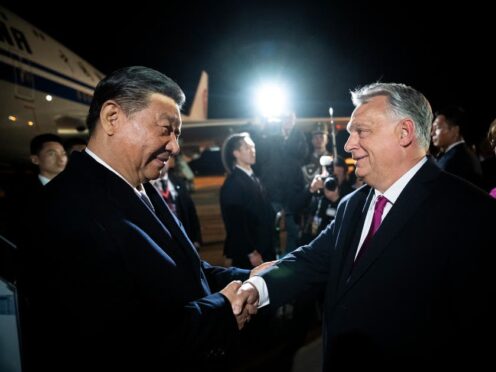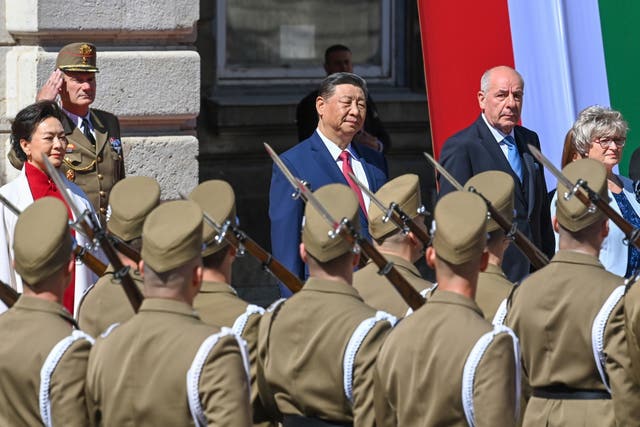
Hungary and China have signed a number of new agreements to deepen their economic and cultural co-operation during a visit to the Central European country by Chinese President Xi Jinping.
The trip is meant to solidify China’s economic footprint in the region.
Mr Xi and Hungarian Prime Minister Viktor Orban held talks in the capital Budapest as part of the Chinese leader’s final stop on a five-day European tour that also took in Serbia and France.
During a press briefing following the talks, Mr Orban praised the “continuous, uninterrupted friendship” between the two countries since his tenure began in 2010, and promised that Hungary would continue to host further Chinese investments.
“I would like to assure the president that Hungary will continue to provide fair conditions for Chinese companies investing in our country, and that we will create the opportunity for the most modern western and the most modern eastern technologies to meet and build co-operation in Hungary,” Mr Orban said.

Beijing has invested billions in Hungary and sees the European Union member as an important foothold inside the 27-member trading bloc.
In December, Hungary announced that one of the world’s largest EV manufacturers, China’s BYD, will open its first European EV production factory in the south of the country – an inroad that could upend the competitiveness of the continent’s auto industry.
Hungary is also hosting several Chinese EV battery plants and hopes to become a global hub of lithium ion battery manufacturing, and has undertaken a railway project – part of Mr Xi’s Belt and Road Initiative – to connect the country with the Chinese-controlled port of Piraeus in Greece as an entry point for Chinese goods to Central and Eastern Europe.
On Thursday, Mr Xi said he and Mr Orban agreed the Belt and Road Initiative “is highly consistent with Hungary’s strategy of opening to the east”, and that China supports Hungary in playing a greater role within the EU on promoting China-EU relations.
Hungarian and Chinese officials concluded a strategic partnership agreement and signed 18 other agreements and memoranda of understanding, but no major investments were announced at the news briefing.
However, Hungarian foreign minister Peter Szijjarto later said in a video on Facebook that initial discussions had begun on China developing a freight railway bypass of Budapest and a rail link between the capital and Budapest Ferihegy Airport.

Mr Orban, a nationalist populist leader who has pursued deeper ties with Beijing while distancing himself from his more mainstream partners in the EU, noted during the news conference that three quarters of investments in Hungary last year came from China, and spoke of Beijing’s role in the world’s shifting balance of power.
“Looking back at the world economy and commerce of 20 years ago, it doesn’t resemble at all what we’re living in today,” Mr Orban said. “Then, we lived in a single polar world, and now we live in a multi-polar world order, and one of the main columns of this new world order is China.”
He added that Hungary would seek to expand economic co-operation with China to the field of nuclear energy. Hungary is currently working with Russia on adding a new reactor to its Paks nuclear facility, which is expected to go online by the end of the decade.
Budapest residents faced road closures and increased security during Mr Xi’s visit as groups of his supporters and critics gathered at various points of the city to demonstrate.
Hundreds of people gathered near Budapest’s Buda Castle waving Chinese and Hungarian flags, hoping to catch a glimpse of Mr Xi’s motorcade.

Enjoy the convenience of having The Sunday Post delivered as a digital ePaper straight to your smartphone, tablet or computer.
Subscribe for only £5.49 a month and enjoy all the benefits of the printed paper as a digital replica.
Subscribe